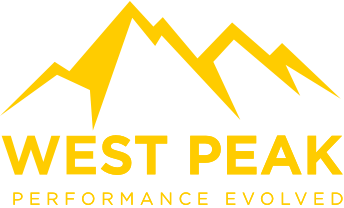How to Create a Financial Roadmap for Your Start-Up
As a start-up founder, navigating the complexities of finances can often feel like walking a tightrope, especially when growth and innovation are your main focus. However, creating a solid financial roadmap is crucial for long-term success, whether you’re seeking funding or managing daily operations.
In this blog, we’ll break down the essential steps to create a financial roadmap that not only guides your start-up toward profitability but also ensures you’re ready for future growth. Get ready to explore the roadmap to financial clarity.
Why Do Start-Ups Need a Financial Roadmap?
You wouldn’t drive across the country without a map—so why would you launch a start-up without a financial plan? A financial roadmap helps founders set clear financial goals, track expenses, and prepare for growth. It also keeps your business focused, ensuring you make informed decisions backed by data and foresight.
At West Peak, we often remind start-up leaders of the importance of having both visionary thinking and grounded financial strategies. Just as we discussed in our blog on Leadership in Start-Ups, achieving balance between ambition and reality is critical.
What Are the Essential Financial Goals for Start-Ups?
When creating a financial roadmap, the first step is setting clear, measurable financial goals. These goals should cover the short-term, mid-term, and long-term financial health of your business. Here’s how to break it down:
- Short-Term Goals (0-12 months): Focus on achieving cash flow stability. This includes tracking all income, expenses, and operational costs to ensure your start-up isn’t bleeding cash.
- Mid-Term Goals (1-3 years): Consider scaling strategies like expanding your customer base or improving operational efficiency to increase profit margins.
- Long-Term Goals (3+ years): Look ahead to larger investments, such as international expansion, developing new products, or mergers and acquisitions.
Achieving these milestones requires not only strategic planning but also a strong understanding of the market. For instance, leveraging data-driven decision-making—like we highlighted in our article on Managing Rapid Growth can be instrumental in reaching your financial goals.

How Should You Track Start-Up Expenses?
Expense tracking is often where many start-ups falter. Overspending on non-essential items or underestimating costs can lead to financial strain. Your financial roadmap should include a detailed strategy for tracking all expenses.
Start by breaking down your expenses into two main categories:
- Fixed Expenses: These include rent, utilities, salaries, and recurring payments.
- Variable Expenses: Marketing costs, inventory, and other expenditures that fluctuate based on business activity.
Tools like QuickBooks, Xero, or Wave are essential for automating and simplifying the expense-tracking process. Regularly reviewing your expenses will ensure that you stay within budget and identify areas where costs can be reduced. This approach, as demonstrated by many of our clients like GQR, helps manage cash flow and prevent overspending.
How Do You Forecast Future Revenue?
Revenue forecasting is a vital part of your financial roadmap. It helps predict how much money your start-up will generate in the future and prepares you for upcoming challenges or opportunities. But let’s face it—forecasting can seem like an intimidating task.
Here’s a simple approach:
- Historical Data: If your start-up has been operational for a while, use past sales data to forecast future revenue trends.
- Market Research: Analyse market trends, competitor performance, and customer behaviour to predict sales volume.
- Sales Projections: Based on your research, estimate the number of products or services you expect to sell over a set period (e.g., monthly, quarterly).
Forecasting can be tricky, especially in the fast-paced world of start-ups where conditions change rapidly. However, as we pointed out in our piece on Critical Decisions That Can Make or Break a Start-Up, the key to effective forecasting lies in balancing intuition with solid data analysis.
How Can You Prepare for Future Growth?
Planning for growth is exciting but challenging. Scaling your business requires a financial strategy that accommodates expansion, hiring, and investment. Here’s how to plan for it:
- Build an Emergency Fund: Make sure you have at least 3-6 months’ worth of operating expenses set aside for unexpected challenges.
- Raise Capital Efficiently: Whether through venture capital, crowdfunding, or bootstrapping, make sure your fundraising efforts align with your financial roadmap.
- Automate Where Possible: As you grow, your administrative tasks will increase. Automate payroll, expense tracking, and invoicing to ensure efficiency.
Successful start-ups like Dropbox have mastered the art of balancing leadership vision with practical financial management, allowing them to scale without losing control.

What Financial Metrics Should You Focus On?
Understanding and monitoring key financial metrics is an important part of maintaining your financial roadmap. Here are the main ones to focus on:
- Burn Rate: This measures how quickly your start-up is spending money, often tracked on a monthly basis.
- Runway: Your runway tells you how long your start-up can continue operating before it runs out of money.
- Profit Margins: Calculating profit margins helps you understand how much of your revenue is profit after expenses are deducted.
By focusing on these metrics, you’ll have a clearer picture of your financial health and can make necessary adjustments to your roadmap.
How Do You Adapt Your Financial Roadmap Over Time?
Your financial roadmap is a living document. As your start-up grows and external factors shift, so too should your financial plans. Keep these tips in mind:
- Review Quarterly: Revisit your financial goals every quarter to see if you’re on track. Adjust your spending or revenue goals based on real-time data.
- Be Flexible: If you notice market shifts, such as changes in customer behaviour or new competition, be prepared to pivot.
- Consult Financial Advisors: Don’t hesitate to seek expert advice. Financial consultants can provide valuable insights and help identify blind spots in your planning.
For example, at West Peak, we’ve worked with numerous start-ups to adjust their financial roadmaps during periods of rapid growth. Continuous monitoring and flexibility are the keys to staying ahead in the ever-changing start-up landscape.
A Financial Roadmap Is Your Start-Up’s GPS
In conclusion, a well-constructed financial roadmap is vital for the success of any start-up. It sets clear goals, tracks expenses, forecasts revenue, and prepares your company for future growth. By focusing on this roadmap, you’ll not only ensure your business survives but thrives in a competitive market.
At West Peak, we’ve seen first-hand how a solid financial strategy can set start-ups on the path to success. Whether you’re just starting out or scaling up, make sure your financial roadmap is up to date and robust. After all, every great journey begins with a plan.
Watch our HOW THEY LEAD podcast
Subscribe to our Podcast
Hosted by our very own Ben Stocken and Benjamin Wade our ‘How They Lead’ podcast aims to evolve the way people perform in leadership roles by showcasing a variety of high performance interviews with people from Patrick Kershaw from The RAF Red Arrows to CEO’s like Steve Phillips who help large brands like Pepsi, Mars and Unilever.
Get one step ahead – Click below to subscribe.










